MHI SAFE-ER-GRIP
Martin Park Owner/President safe-er-grip.com
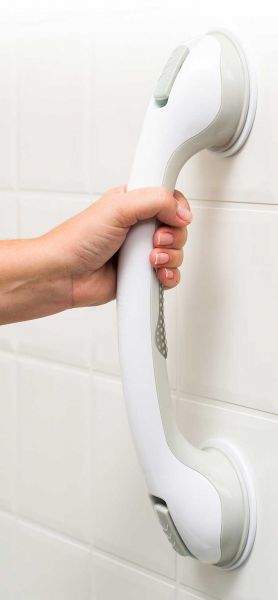 Safe-er-Grip balance assist bar
Safe-er-Grip balance assist barWhat market segment is best served by your product, and how do you differentiate your products? PARK: The individual seeking balance in showers and baths due to injury or a growing balance issue. These products are essential now to the safety story for the injured and elderly. They are also cash sale items and are reasonably priced. Above all, falls are so relevant these days. It is our responsibility to address fall prevention as best as we can. As the originators of suction cup balance assist bars, we have continued to grow our product offerings. How can HME providers realize profitability with fall prevention products? PARK: Speaking only for ourselves, we price our products so that reasonable, but healthy margins, are built into our product. What are the key considerations patients/caregivers should know about fall prevention? PARK: Nothing prevents falls, so let’s focus on minimizing them. Products such as ours serve that purpose perfectly. From a retail perspective, such safety elements are not always covered by insurance or Medicaid. These are not considered medical devices.
STANDER
Troy Holland Chief Sales and Marketing Officer stander.com
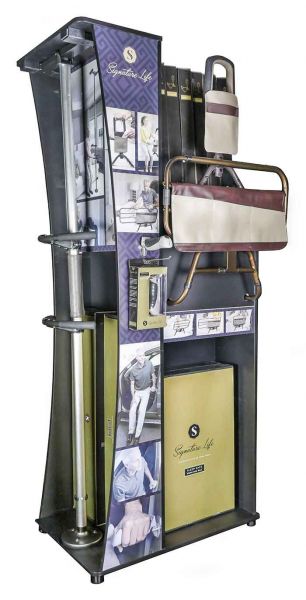 Stander Signature Life
Stander Signature LifeWhat is your specialty? HOLLAND: We specialize in fall prevention and mobility aids for anyone struggling with mobility issues. Our products are designed to be a universal fit in the home. How has the market for fall prevention products changed? HOLLAND: Retailers need to look for solutions not found online. Stander created the Signature Life product line that is higher end and luxury products. The MAP online is full MSRP, so we control the pricing. This protects dealers from online competition. What forces have put the most pressure on this category? HOLLAND: Everywhere we go we hear from dealers who can’t compete with online. Differentiate yourself from online. Educate your customers on what will fit their needs the best. Offer same-day installation. Amazon can’t offer that. Have a showroom so customers can see the product. Have excellent customer service. Offer a unique and innovate product mix that big box retailers can’t offer. How can HME dealers realize profitability with this category? HOLLAND: [You] won’t be profitable unless you have trained your staff on top-down sales on all of the solutions for the home—Good/Better/Best. Start with the best…educate the customer first. You have to offer higher-quality products to sell the mid-grade products. Some customers only want the best, and they don’t look at the better or good. Maximize sales by offering the highest-quality products. What are the key considerations patients/caregivers should know about fall prevention? HOLLAND: Most people are too late. [They] only think about prevention after a fall has occurred. Dealers need to let them know when they walk into the store that it’s only a matter of time before a fall occurs. Is the home outfitted for prevention? Awareness prior to the fall is one of the things we lack in our industry.
PROACTIVE MEDICAL PRODUCTS
Brian Goldstein, CEO proactivemedical.com
 Proactive Medical Poducts
Proactive Medical PoductsWhat is your specialty? GOLDSTEIN: Patient wheelchair and bed alarms, wheelchair, bed and floor sensor pads, and beveled edge safety fall mats for long-term care. HME providers should contract with their local nursing homes to provide these products. What strategic shifts in thinking and business management have occurred that have helped grow the business? GOLDSTEIN: Product cost is always a challenge in the LTC market. Proactive has a program where you will receive a free alarm with the purchase of 20 sensor pads. Proactive offers a private label program with low minimum order quantities to help our distributors build brand recognition and repeat orders. How has the market for fall prevention products changed during the last three years? GOLDSTEIN: Institutions are requiring the alarms to last much longer. Proactive offers a free rubber boot on our Advanced series alarms to protect and elongate the lifecycle. The shift has been moving from a basic foam fall mat 2x24x66” to a beveled non-skid product. The beveled fall mat allows the caregiver to roll the wheelchair close to the bed for easy and safe transfer. How do you differentiate your products from others in the category? GOLDSTEIN: Proactive Medical offers more alarm choices (seven) with more features. LTC facilities are renovating their rooms to make them more attractive. Our beveled fall mat has an aesthetically pleasing elegant floral design to enhance the décor.
MOTIVO
Nicole Wolf Director of Marketing motivolife.com
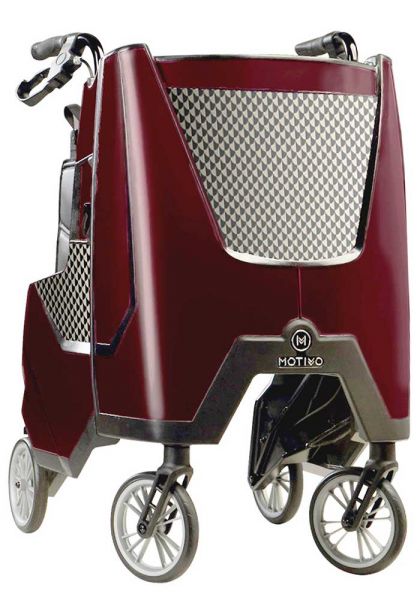 Motivo Tour
Motivo TourWhat is your specialty? WOLF: Motivo creates independence enabling products that fit into people’s everyday lives. The Motivo Tour is for anyone who needs a little help getting around. Whether that is an elderly person who needs added stability while walking or a younger individual living with MS for example, the Tour is designed for everyone. What strategic shifts have occurred that have helped grow the business? WOLF: We’ve changed how people look at walkers. Using a walker is not something most people want to do, and when someone doesn’t want to use their walker, they don’t, and this can result in seclusion, inactivity and falls. Motivo and the Tour were designed from the ground up as a consumer product, and we’ve set out to shift the mentality of walkers from a medical product that you have to use, to a consumer product that you want to use and even get excited about. What forces have put the most pressure on this product category? WOLF: The rapid transition from a predominantly Medicare-based reimbursement sales model to the much more retail sales based model. As members of the HME community, we are familiar with competitive bidding and reimbursement reduction, but the everyday consumer is not. “Is it covered by Medicare?” is still a frequent question and educating the consumer while trying to accommodate them can be a challenging and time-consuming task. What trends have you identified for fall prevention? WOLF: We’ve seen an increase in older adults taking a proactive approach to staying active. Being active and mobile goes a long way toward fall prevention. What are the key considerations patients/caregivers should know? WOLF: Compliance. Loss of balance is the leading cause of falls among seniors, and a study conducted at by Stephen Robinovitch, professor of biomedical physiology and kinesiology at Simon Fraser University, discovered that lack of walker or wheelchair use was the main cause of momentary loss of balance. He found that though 75 percent of patients reported using a walker or wheelchair to get around, only 20 percent were using one when they fell. The Tour’s design encourages seniors to use it on a regular basis, because it’s easy to use, it’s comfortable, it increases independence, and it’s attractive.
COMPASS HEALTH BRANDS
Peter Kaplan Vice President of Product Management compasshealthbrands.com
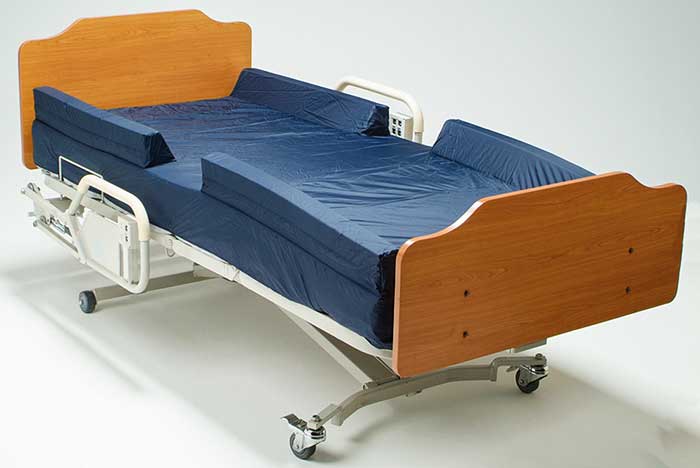 Safe-T-Guard Mattress Cover
Safe-T-Guard Mattress CoverWhat is your specialty? KAPLAN: Homecare solutions that help people remain independent inside and outside their own homes, comfortably and safely. [Our] primary focus is on the homecare market, including homecare providers, distributers, independent and chain pharmacies, and therapy markets including OT, PT and AT. Fall prevention, in and outside the home, is a key concern that our products address. By putting the patient’s safety and comfort at the forefront of value-based thinking, we can enhance patient independence without sacrificing quality. We offer products that are easy to use, with innovative design, best-in-class quality and are cost-effective across a diverse level of needs. How has the market for fall prevention products changed during the last three years? KAPLAN: Medicare reimbursement changes have significantly impacted the industry with fewer providers and lower reimbursement to efficiently and effectively service a fast-growing market. Innovative new products and design are addressing market needs for improved product efficacy and cost-effective products. These changes will better protect patients from fall injuries and reduce health care costs for hospitalization and rehabilitation. How can HME providers realize profitability with fall prevention products? KAPLAN: Product innovation and more cost-effective products have improved patient outcomes as the result of falls both in and outside the home. Customized homecare packages are an opportunity to provide the right mix of products for the patients’ current needs—mobility, bath safety and personal care. However, when designing the right mix for a patient, providers should also consider what will be needed in the future. This foresight can create a long-term patient relationship built on the provider’s expertise. Tell us about a recent innovation in fall prevention. KAPLAN: Compass Health offers an innovative design in multiple sizes for bolstered foam mattresses that provide comfortable, unimpeded rest while providing a practical and effective method to ensure patient safety with reduced risk of falling out of bed. In addition, [we] offer options for non-obtrusive closed cell sponge design bedside fall mats for added patient safety. We continue to work on new innovations to further address the need for improved patient fall prevention. What are the key considerations patients/caregivers should know about fall prevention? KAPLAN: Patient and caregiver safety is the primary concern. Choosing the right products, modifying the home to address a patient and/or caregiver needs and consulting with a home health care expert, can greatly reduce the chances of injury to patients and caregivers. Look for providers who have experience and offer a number of options to accommodate a variety of needs and circumstances.
PROMENAID
Rob Geller Vice President of Commercial Operations promenaid.com
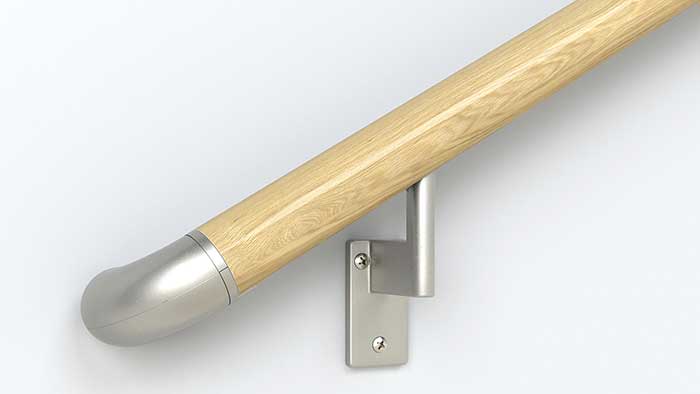 Promenaid ADA-Compliant Handrail
Promenaid ADA-Compliant HandrailWhat is your specialty? GELLER: We manufacture ADA-compliant handrails and grab bar systems [that can go] throughout the house and meet every level of code. Best served is the person with a mobility issue, who needs it to help pull themselves up and needs it quickly. Handrails can be anywhere for any reason. What are some key considerations about fall prevention products? GELLER: We need to reach the contractors and the dealers who understand the work. The contractors understand the problem of handrails because they’ve dealt with them. Installers think handrails are a nightmare to install and the end-user thinks it’s disruptive. So we have videos on the scope of falls and the solutions. Installation can be done easily quickly and affordably—and for the dealers, profitably. We can have any handrail measured, designed and on your wall anywhere in North America in 24 hours. What should patients/caregivers know about fall prevention? GELLER: As it becomes more understandable why we fall, it becomes less stigmatized. There are very simple things to help with prevention: Stay mobile, install good lighting, remove clutter, add handrails. I think everybody I’ve met so far is in the business because of someone close to them. We’re in this because someone close to me went through the misery of putting in handrails. We started with our base product eight years ago. Everything since then has been developed from talking to end-users or contractors asking for something else. What are the things we are being asked for on a regular basis, and then doing it. It’s surprised us in some cases. Why should fall prevention products be attractive to HME providers? GELLER: Because falls are the No. 1 cause of accidental death in seniors, and it’s growing by 10 percent a year. It’s beating breast cancer. Across all age groups, falls now cause more deaths than car accidents. Anyone walking into the store, that’s the biggest problem. It may not be the most annoying, but it’s the biggest. How do you provide something they may not want, but they really need? It’s about having that conversation effectively and neatly.
BROWNMED
Matt Garver Vice President Marketing brownmed.com
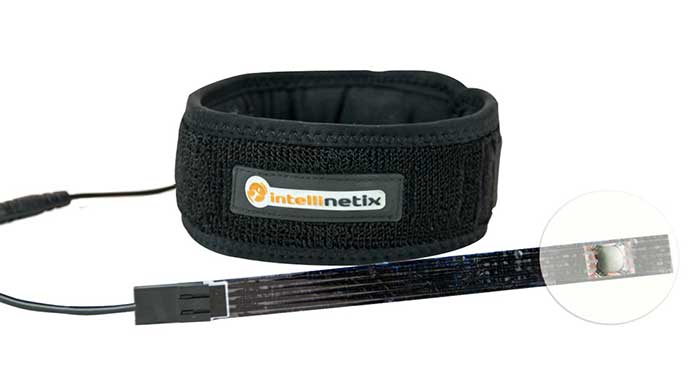 Intellinetix Step Sensor
Intellinetix Step SensorWhat market segment is best served by your product? GARVER: We’ve been manufacturing products for patients with acute injuries or chronic illnesses, such as arthritis, fibromyalgia and diabetes for more than 50 years. Why should fall prevention products be attractive to HME providers? GARVER: Estimates are that each year, approximately 1 in 3 people over the age of 65 falls. Annually, falls among older adults are responsible for more than 20,000 deaths, 2.4 million emergency department visits and more than $30 billion in direct medical costs, which is expected to rise to $47 billion by 2020. Falls cause over 95 percent of hip fractures, are the most common cause of traumatic brain injury. There is no way to look at that data and not think fall prevention should be a priority among all who serve the senior segment. Fall prevention should be on everyone’s list, not just HMEs. By providing education, HMEs offer a valuable opportunity and community resource to reduce those risks in the general population. Tell us about a recent innovation in fall prevention. GARVER: Intellinetix Step Sensor is a patented device that utilizes vibrating technology to provide gait assistance to those with peripheral neuropathy and drop foot. It works by providing a gentle vibration as the heel strikes the ground, fostering increased confidence in gait and providing a subtle, yet effective, reminder to lift the toe. Step Sensor is an easy-to-use alternative to help reduce tripping, falls and toe dragging typically associated with drop foot and other conditions. How do you differentiate your products from others in the category? GARVER: AFOs can be bulky, uncomfortable and limit footwear options. Dynamic, electrical stimulation systems can offer more promise, but also require weekly follow-ups, doctor-led training and complicated reimbursement strategies. The aim of Step Sensor is to bridge the gap by offering a device that is easy to use and easy to wear for just about any adult with drop foot or peripheral neuropathy.
INVACARE CORP.
Mark Palumbo Manager of Corporate Accounts invacare.com
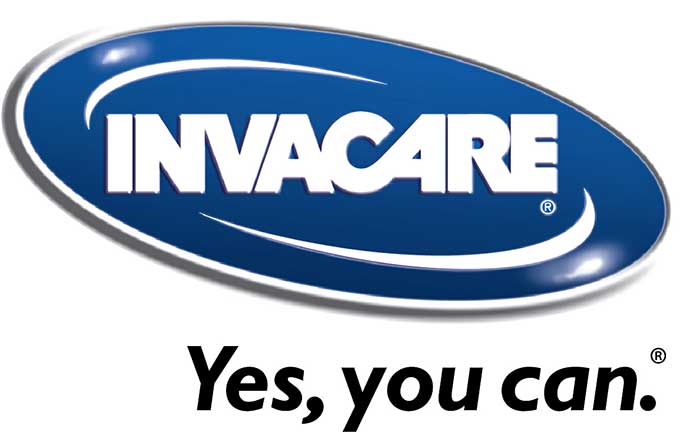 Invacare
InvacareHow has the market for fall prevention products changed? PALUMBO: Invacare serves the homecare, hospice, and rehab provider, who, in turn, serves the patient/end-user. The most notable change right now is the push for cash sales and/or bundled services. With reimbursement dropping and little to no coverage on bath safety items, the add-on sales become even more important. The internet has put the most pressure on this product category. On the positive side, the internet makes information more readily available, so a more educated consumer walks into your store. It also brings about a greater sense of awareness of products, letting consumers know certain products are available. This cuts down on transaction time, helping improve efficiency and giving you more time to upsell. On the other hand, the ‘buy it now’ nature of the internet may mean that the consumer may never make it into your store. How can HME providers realize profitability with this category? PALUMBO: Since items used in the bathroom are rarely covered by Medicare, they lend themselves to easier cash sales and make a compelling upsell. If a consumer needs a transfer bench, then it’d be logical for them to need a grab bar. These items can also open the door for a conversation soliciting home modifications. In addition, never forget about service. Something as simple as walking a product to a consumer’s car or offering to assemble it for them can turn a one-time consumer into a repeat one. The more service you can provider to a consumer, the more valuable you become to them, bringing more value to your business. What strategic shifts in thinking have occurred? PALUMBO: There’s a greater value placed on quality and longevity. Educated consumers are no longer looking for the least expensive products possible. Thinking seems to have shifted from, “How cheap can we get this product?” to “What is the best value for our money?” Whether it’s a temporary bed rail or a permanent grab bar, safety and fall prevention are of the utmost importance to consumers—especially when caring for loved ones. Items such as bath and transfer benches open the door for other items down the road. What are the key considerations patients/caregivers should know about fall prevention? PALUMBO: When trying to eliminate falls, one must not only consider the health of the patient, but also the health of the caregiver. A caregiver’s needs are not always at the forefront of the conversation, and without a healthy caregiver, the quality of the patient’s care will suffer. If we can help make things less burdensome for the caregiver, then the overall quality of care can increase.
DRIVE DEVILBISS HEALTHCARE
Serena Wei Marketing Coordinator drivemedical.com
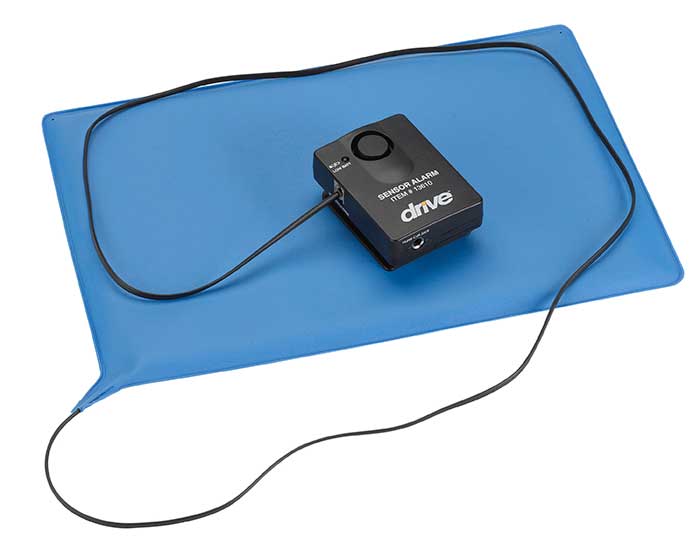 Pressure-sensitive patient alarm
Pressure-sensitive patient alarmWhat is your specialty? WEI: Our vision is to help build an industry where the clinical and payer communities acknowledge that purposeful selection of durable medical equipment informs clinical outcome. Fall prevention programs are an outstanding illustration of that vision…choose the appropriate suite of products for an individual, and a provider can prevent an unplanned emergency room visit; treat equipment as interchangeable commodities, and we will not improve outcomes and will moreover devalue our own industry. Essentially, any part of the supply chain that has the opportunity to recommend, prescribe, assess or purchase equipment that can facilitate safety, comfort and independence for individuals with disabilities, disease and injury would benefit from purposeful selection of products that in aggregate amount to a component of an effective Fall Prevention Program. How has the market for fall prevention products changed? WEI: Long-term care (LTC) facilities are focusing on low-height beds and “assist” bars/rails that maximize resident independence and safety... the addition of fall mats helps mitigate injuries that may occur. In the hospice market, we routinely see providers deliver low beds and patient monitoring alarms as a routine part of their DME’s suite of products but neither was actually preventing the patient from falling out of the bed and onto the floor. Additional fall prevention products, such as raised rail mattresses or universal defined perimeter covers, can be used to retrofit an existing mattress with raised bolsters which prevents accidental roll offs and high density foam fall mats placed bedside on the floor can further protect the patient from injury in the event that they do fall. How can HME providers realize profitability with this category? WEI: A thoughtful program will win disproportionate shares of business from clinical and potentially payer referral sources. Acquiring those customers allows providers to work on maximizing appropriate revenue per customer, as well as the longer-term lifetime-value of those customers. Tell us about a recent innovation in fall prevention. WEI: We have seen an increased request for beveled edge fall mats. The beveled edge design allows for patients, caregivers, and clinicians to easily walk over the mat without tripping. The beveled edge also is easy to use because the mat can stay in place and doesn’t have to be stored anywhere, which can be a problem with the bulkier “gym mat” style fall mats.
MEDLINE
Emily Berman Senior Product Manager medline.com
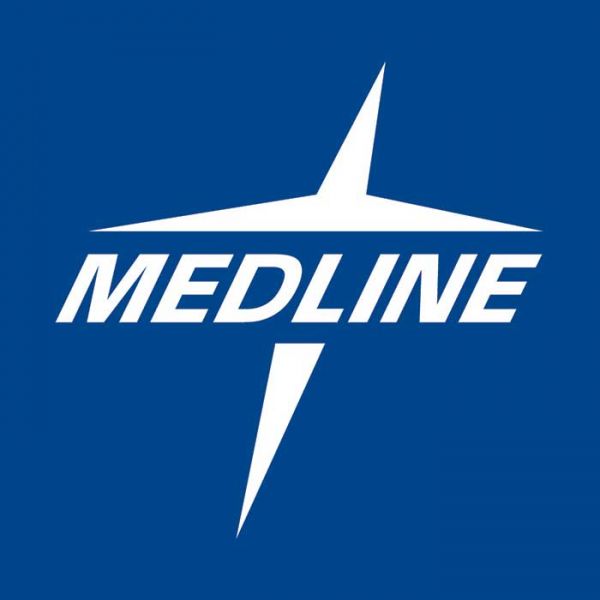 Medline
MedlineWhat is your specialty? BERMAN: Medline is a privately held manufacturer and distributor of health care products and clinical solutions across the continuum of care. Medline offers robust products and value-added programs to help improve patient transitions and prevent readmissions. What strategic shifts in thinking and business management have occurred? BERMAN: Health care delivery is under tremendous pressure to transform in both economic performance, but most importantly, quality and safety performance. Homecare operators have started to embrace that in order to survive, they need more than just supplies. They need a strategic partner who can provide ideas and solutions for managing costs and improving quality of care. It’s something we strive to achieve with our customers on a daily basis. How has the market for fall prevention products changed? BERMAN: Designing a safe environment in the home setting is a very different approach than acute care setting. Thought must be given to types of products that promote safety and design that meets the functional needs of the setting and individual. How do you differentiate your products from others in the category? BERMAN: Medline works to understand our patients and their actual day-to-day challenges. Our innovations are grounded in the reality of patient experience driving the creation of products that successfully alleviate some of their mobility challenges. Why should fall prevention products be attractive to HME providers? BERMAN: For the general older population living in the community, evidence suggests that individualized home programs of muscle strengthening and balance retraining, complex multidisciplinary, multifactorial, health/environmental risk factor screening and intervention, as well as home hazard assessments and modification can all reduce the incidence of falls. The interventions are where products are part of the approach in providing fall prevention and injury reduction. Many times loved ones want to make the environment safe for their loved ones, but do not know what to do and where to go. An HME can be the source to assist. What trends have you identified for fall prevention? BERMAN: The emerging research is now on the influence of mobility and gait. There is also some emerging research on the correlation of skin tears as a precursor to a fall. Almost the canary in the coal mine thought, as the skin tear is now indicating less control of gait
